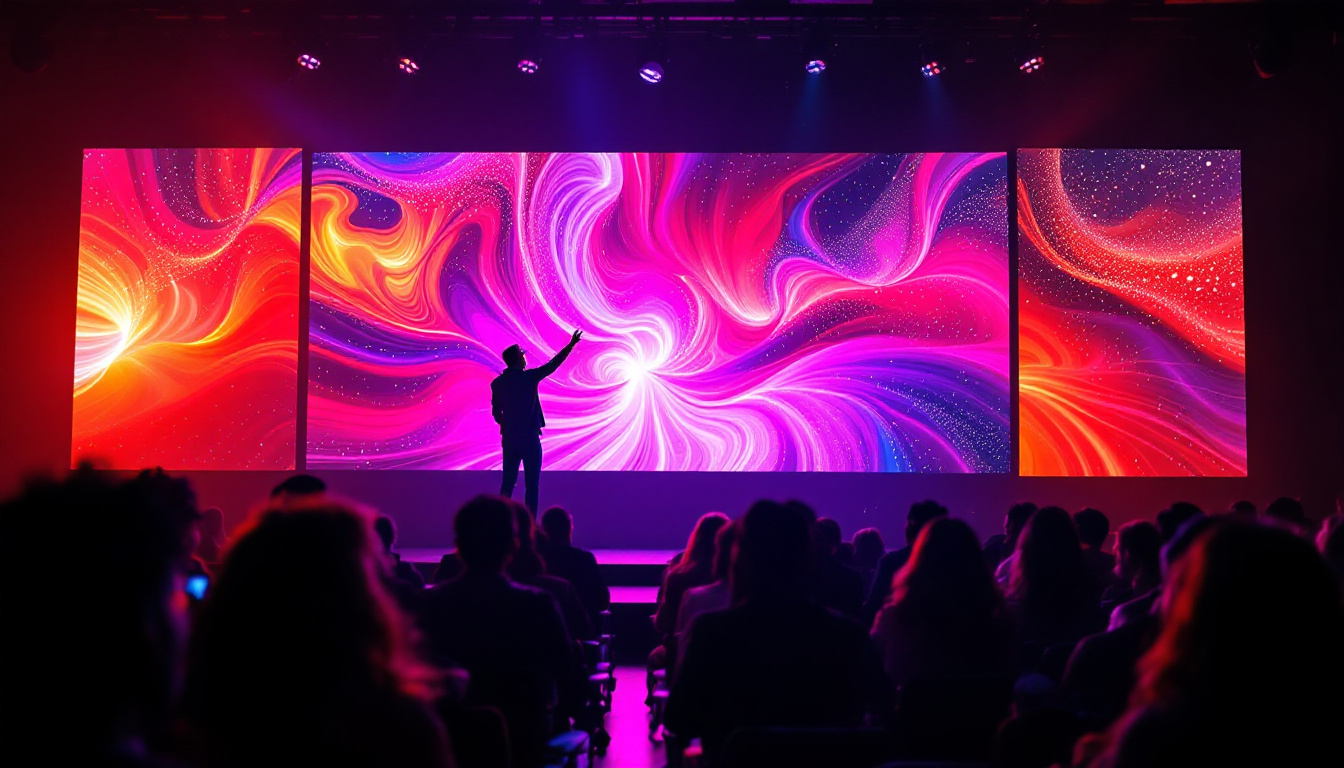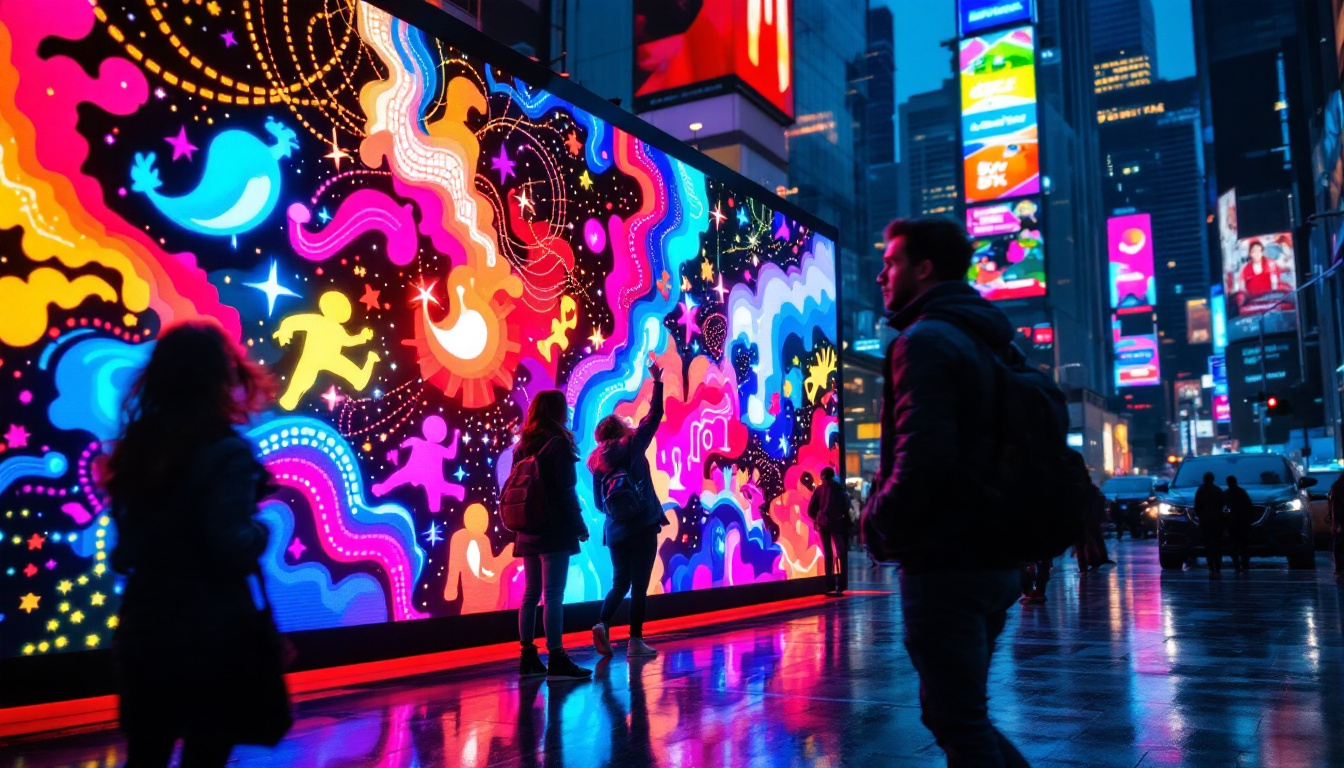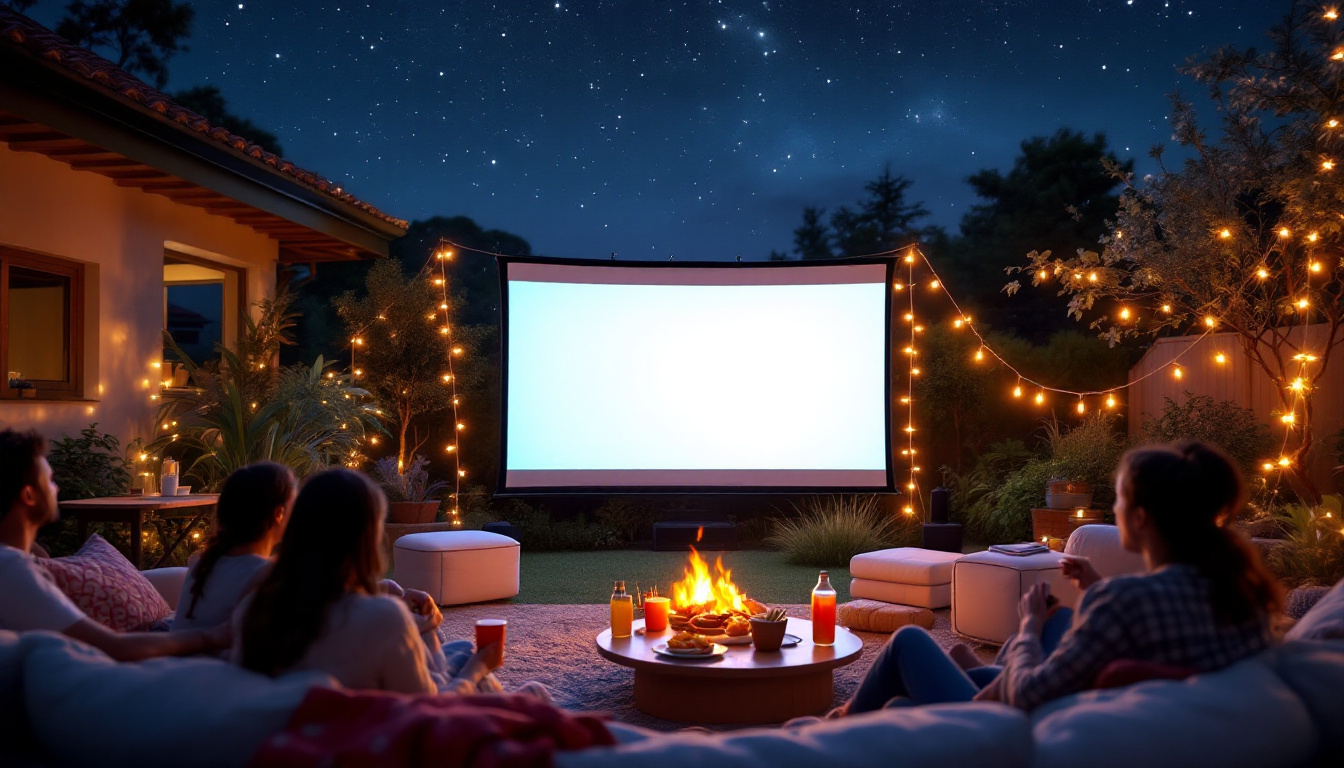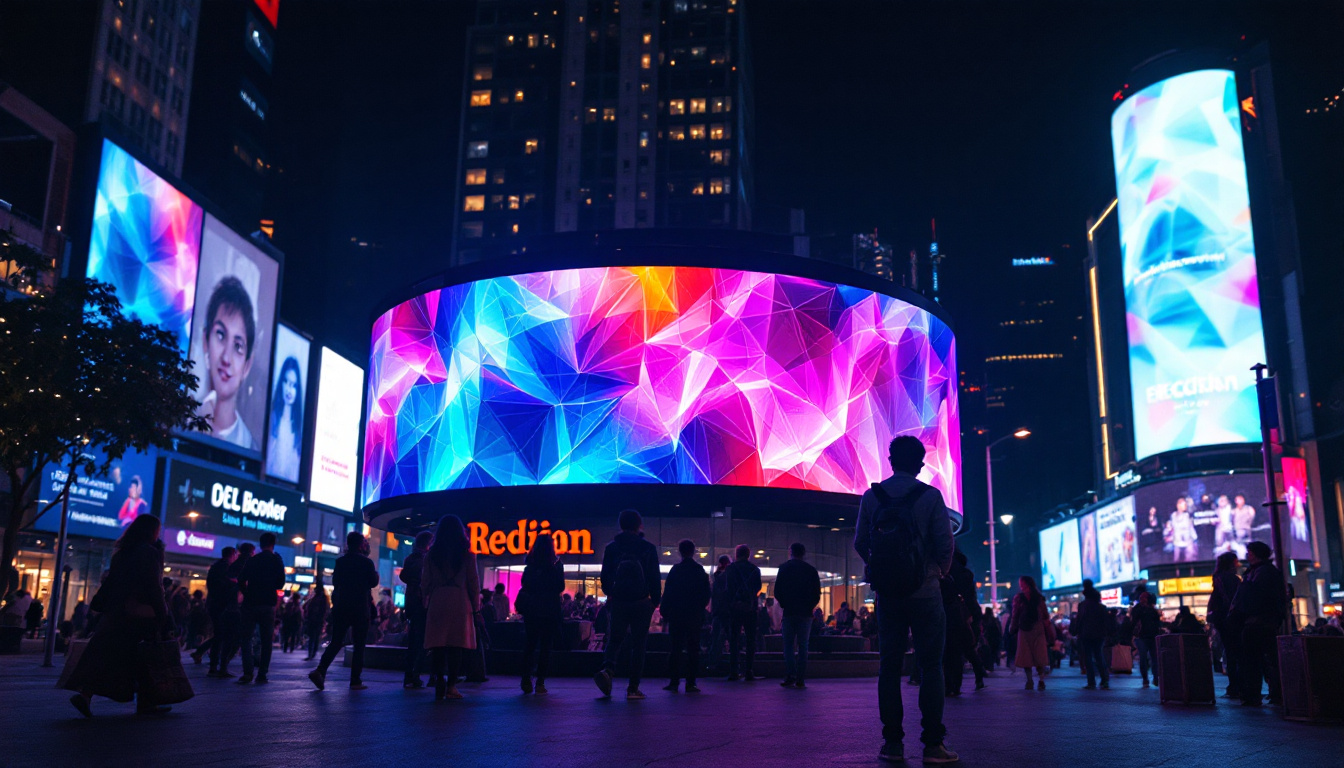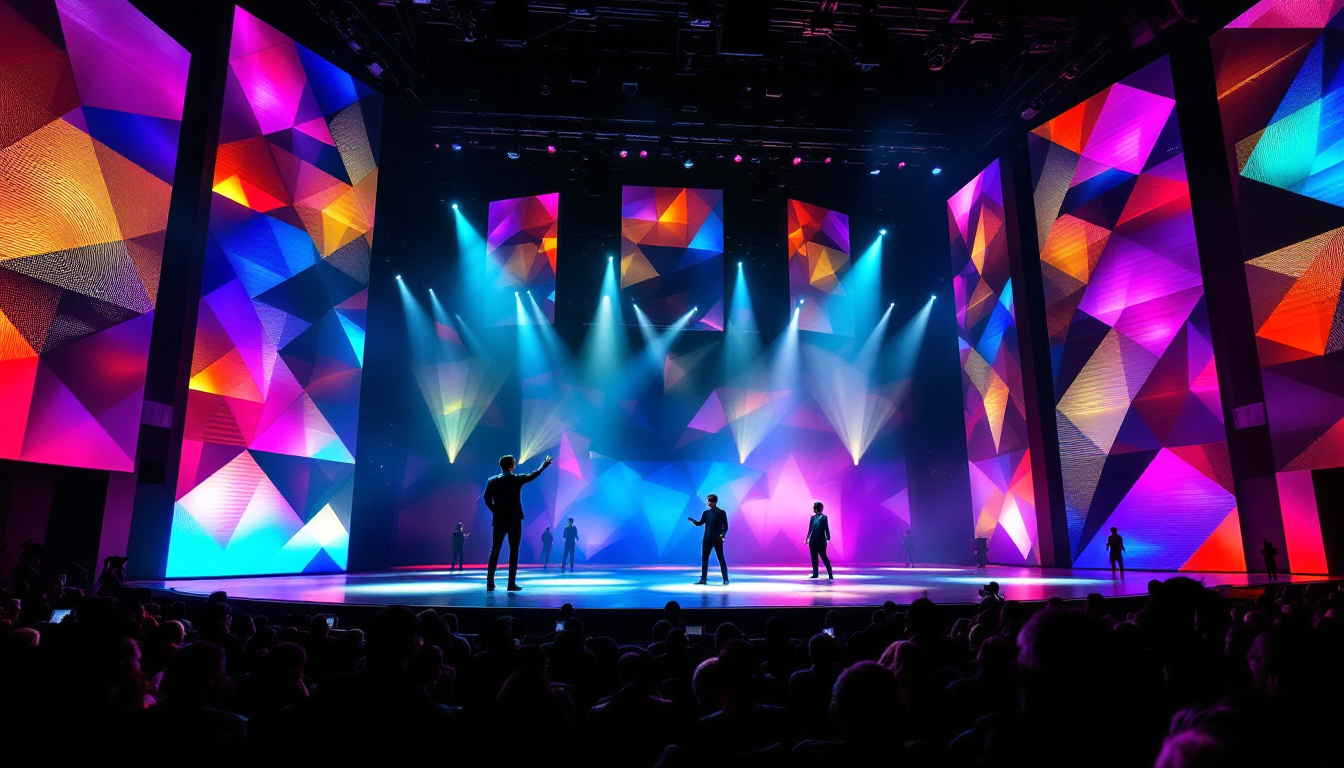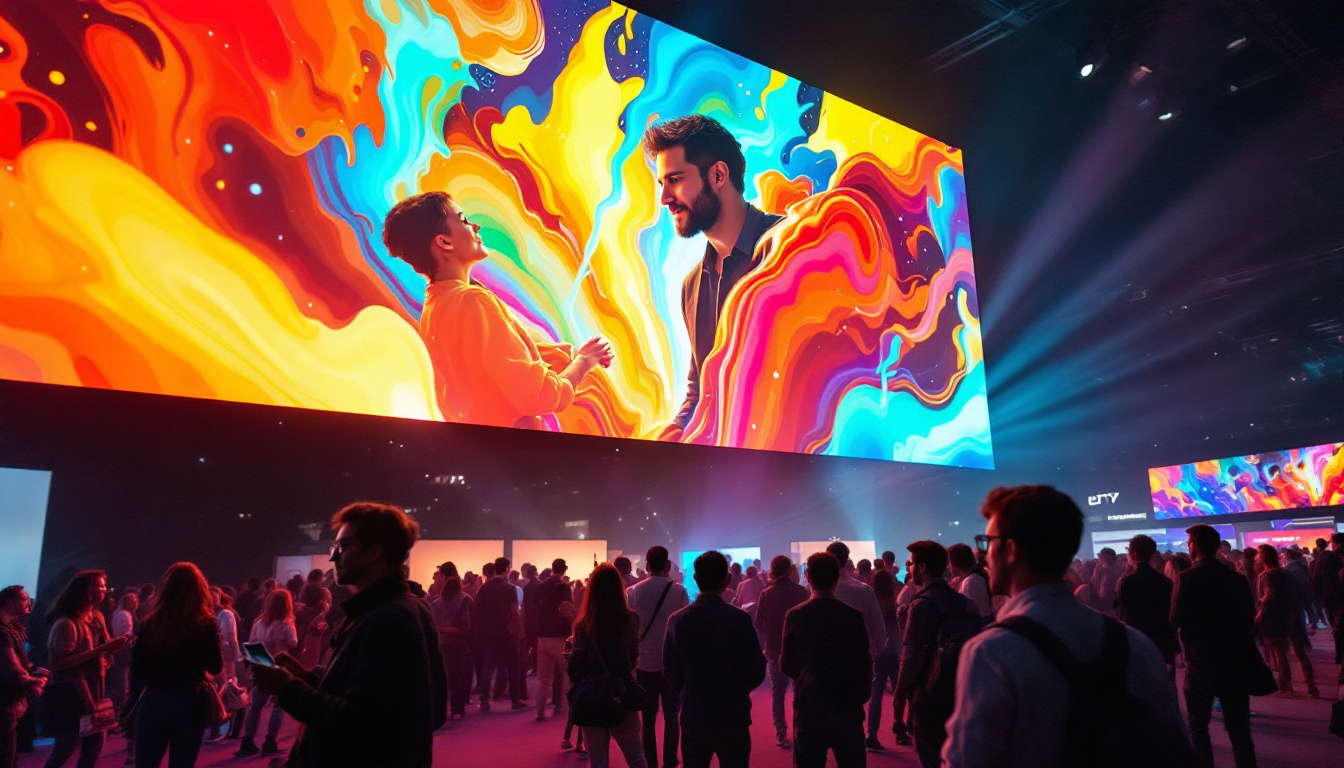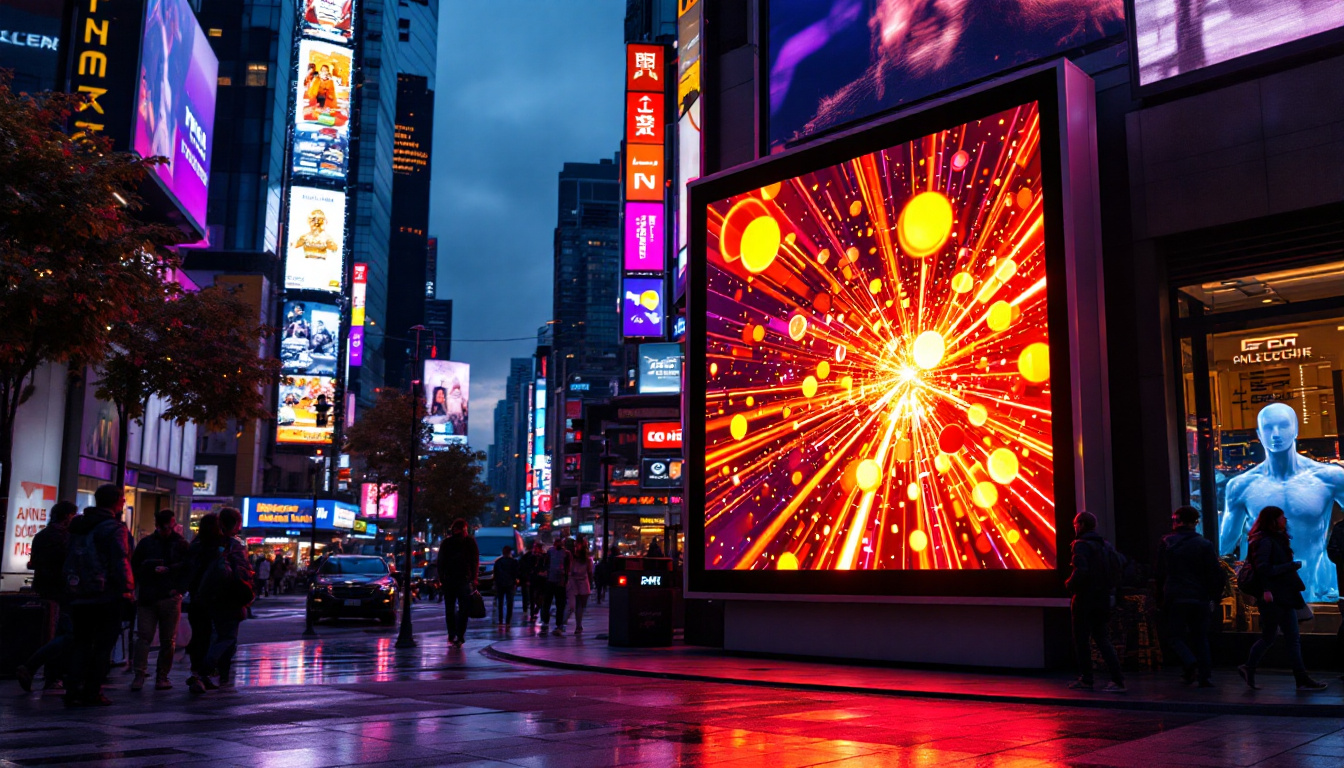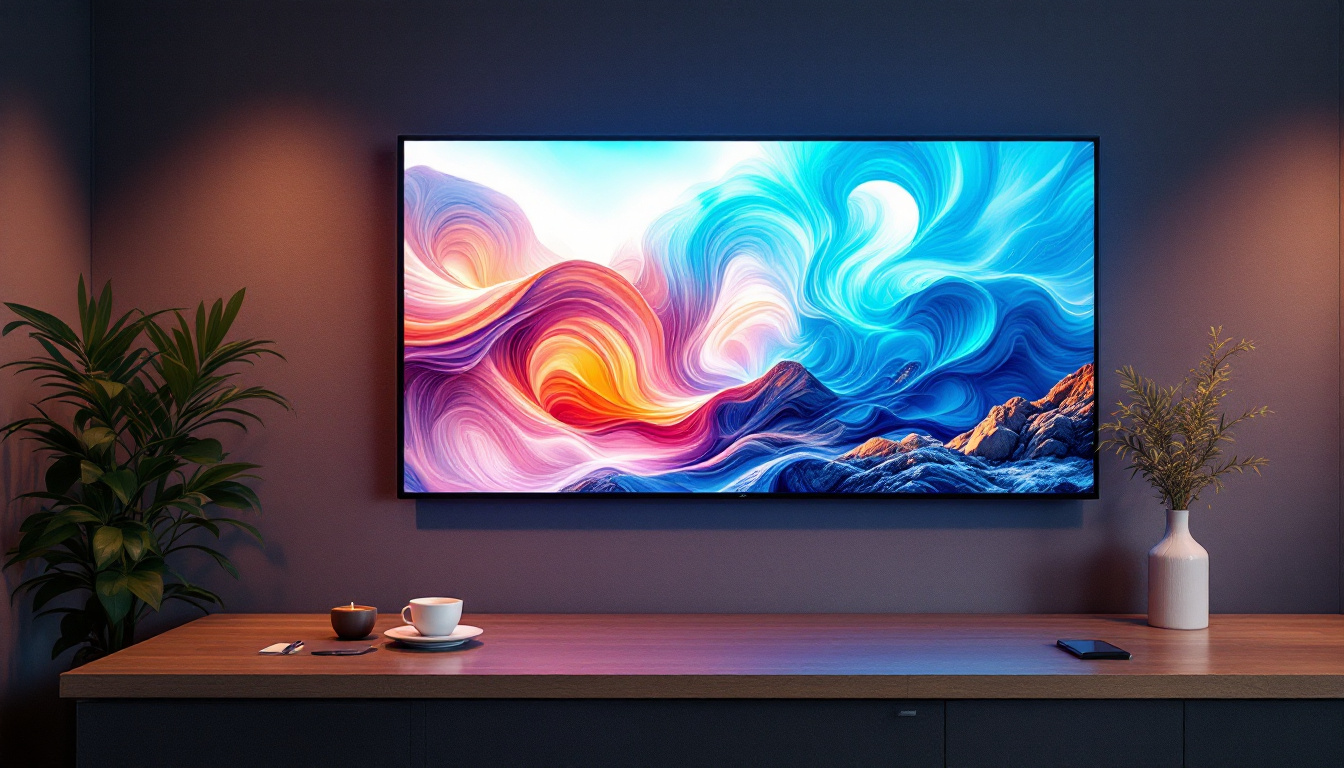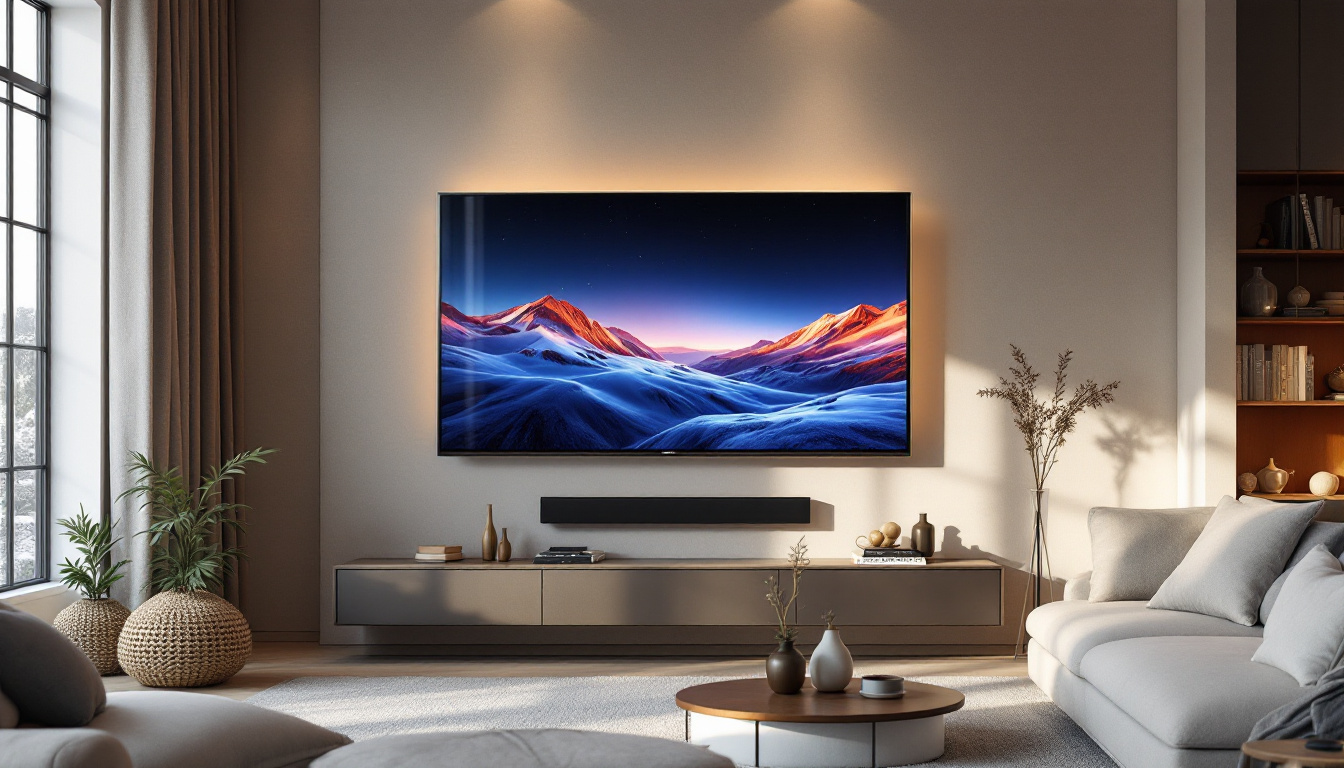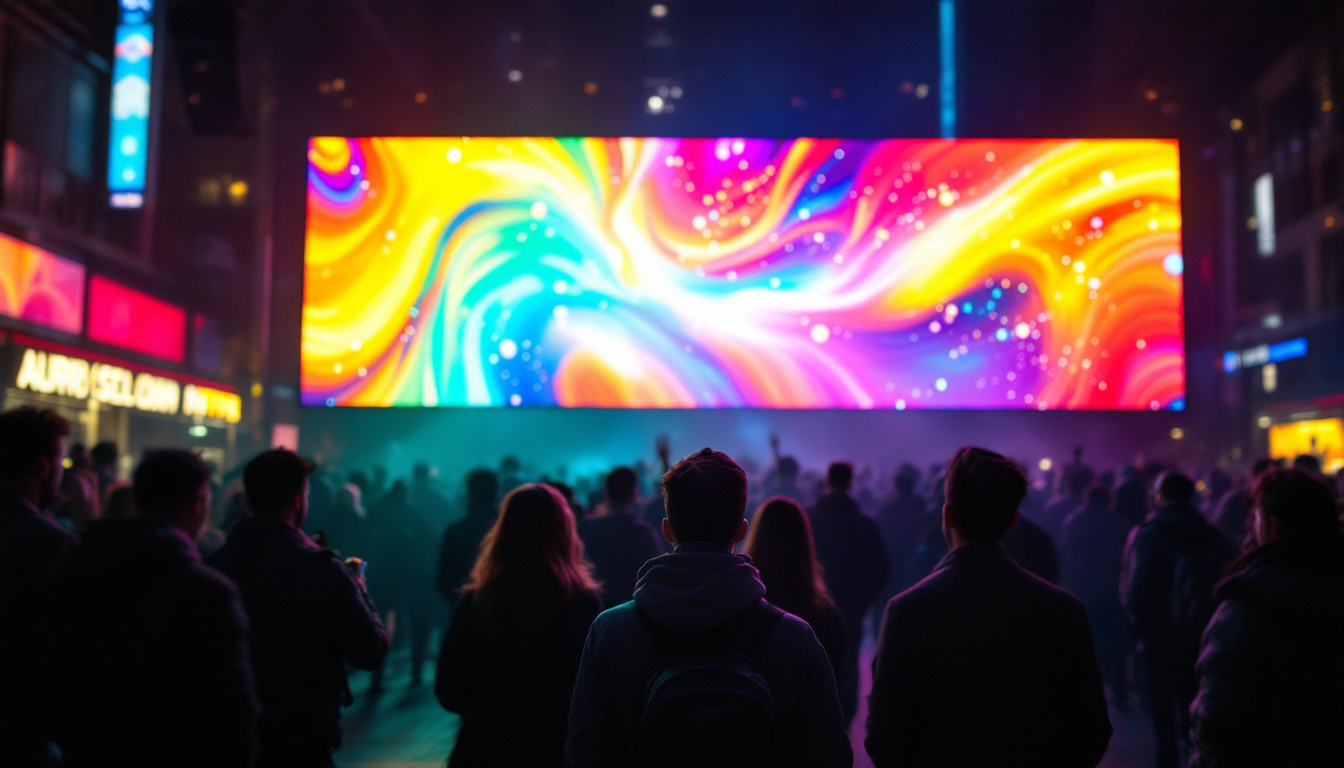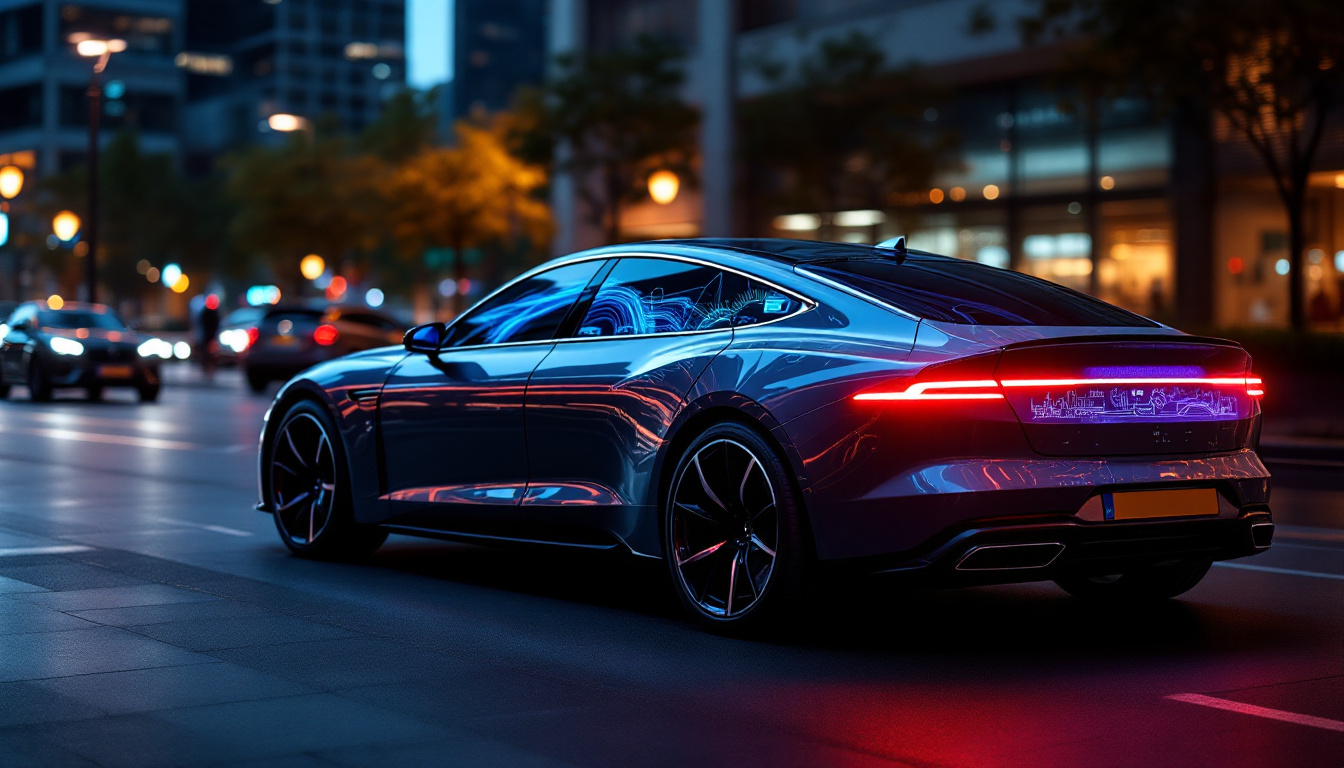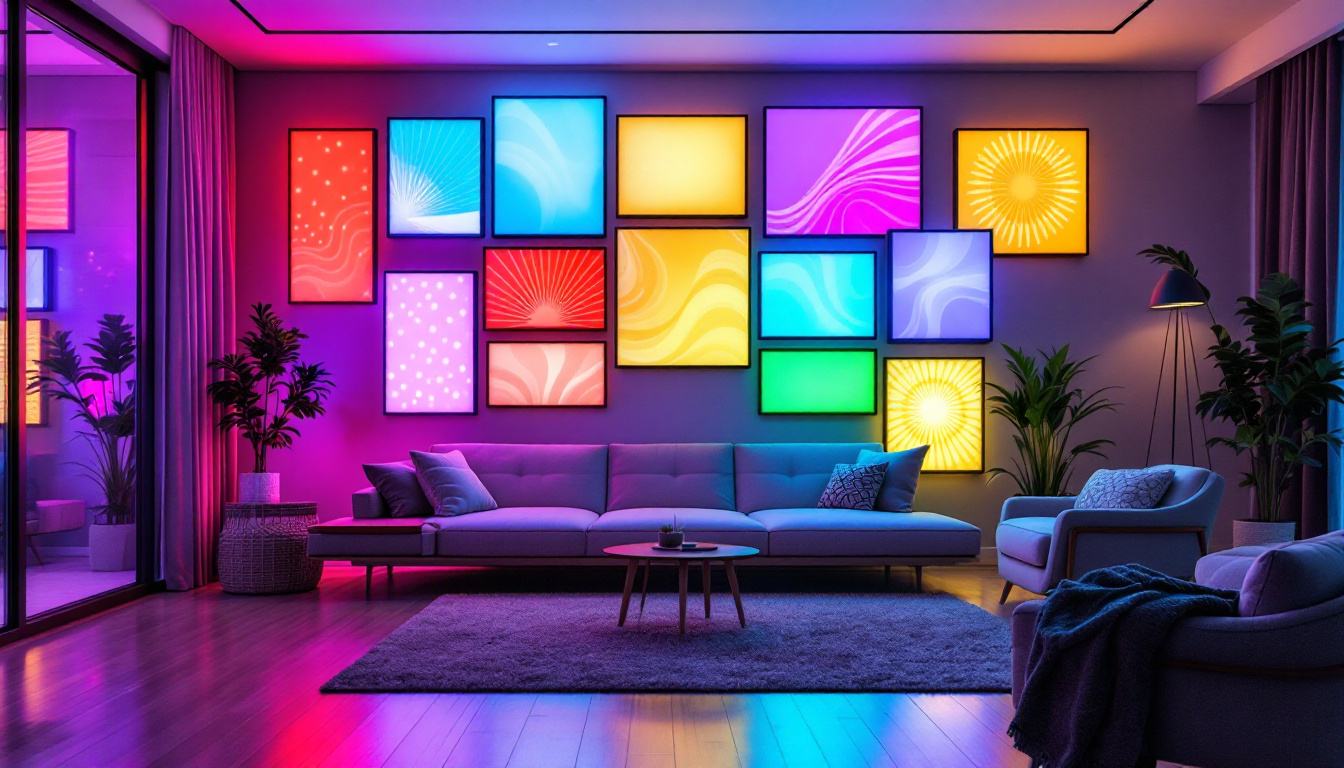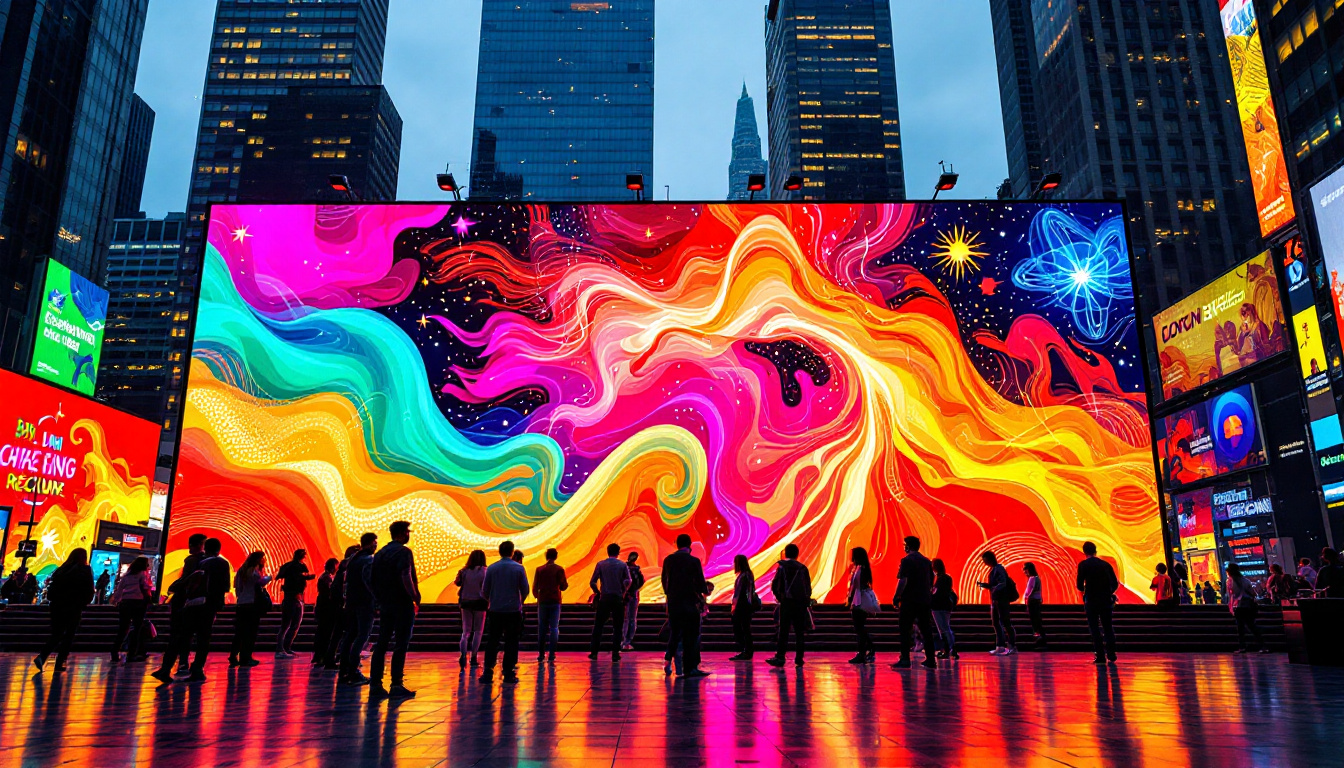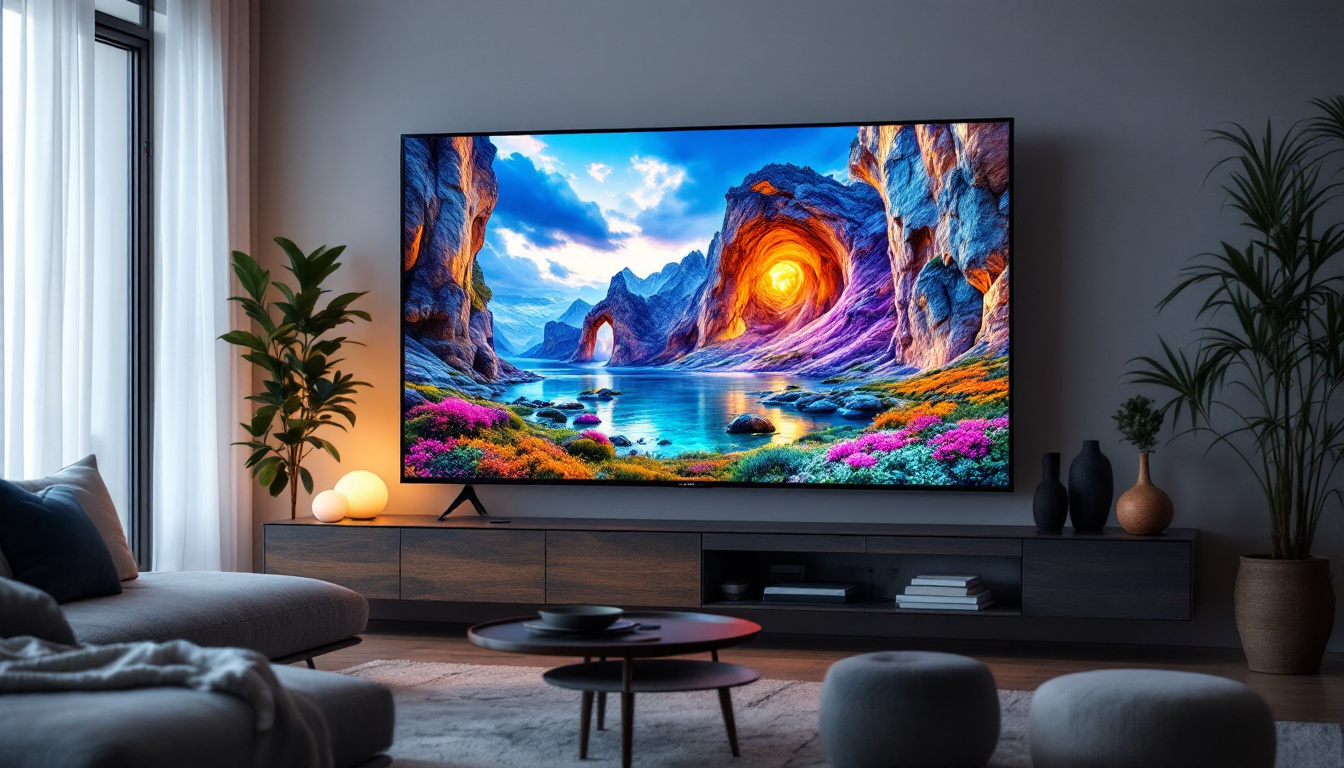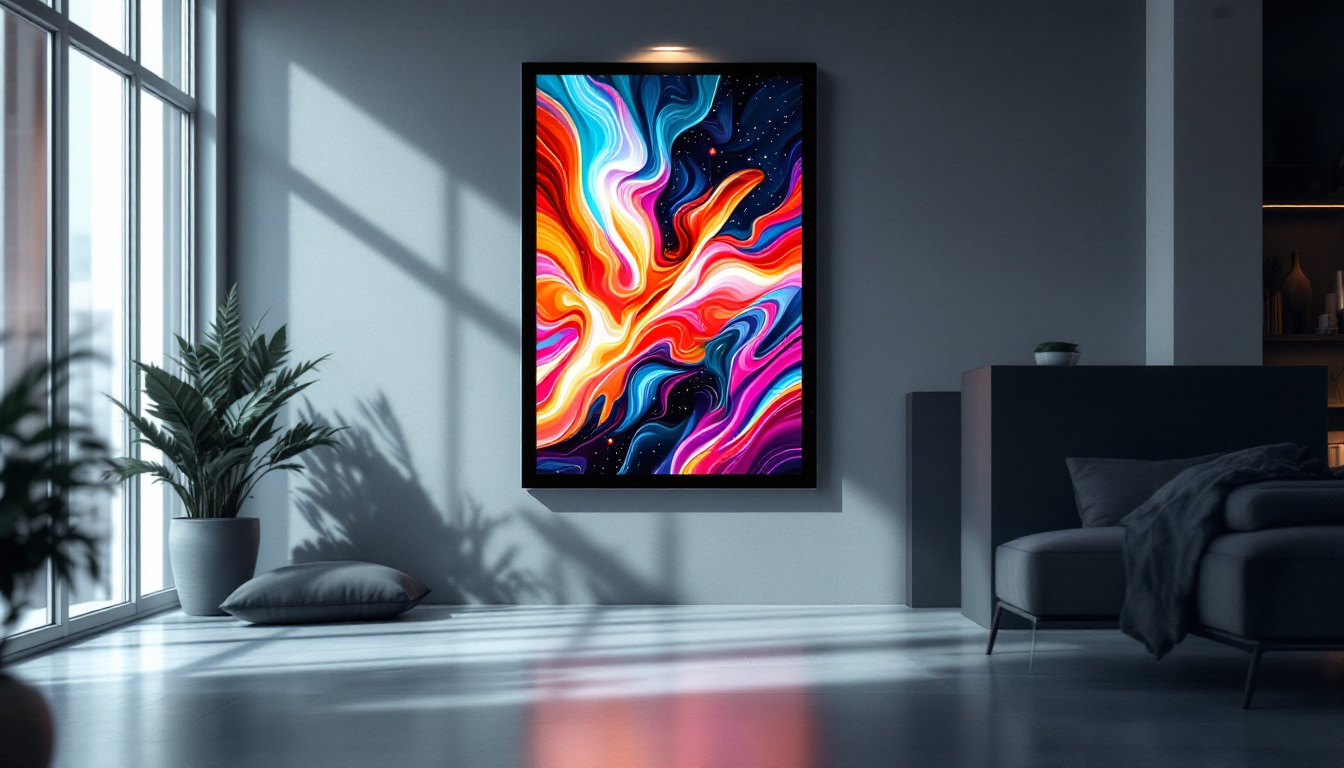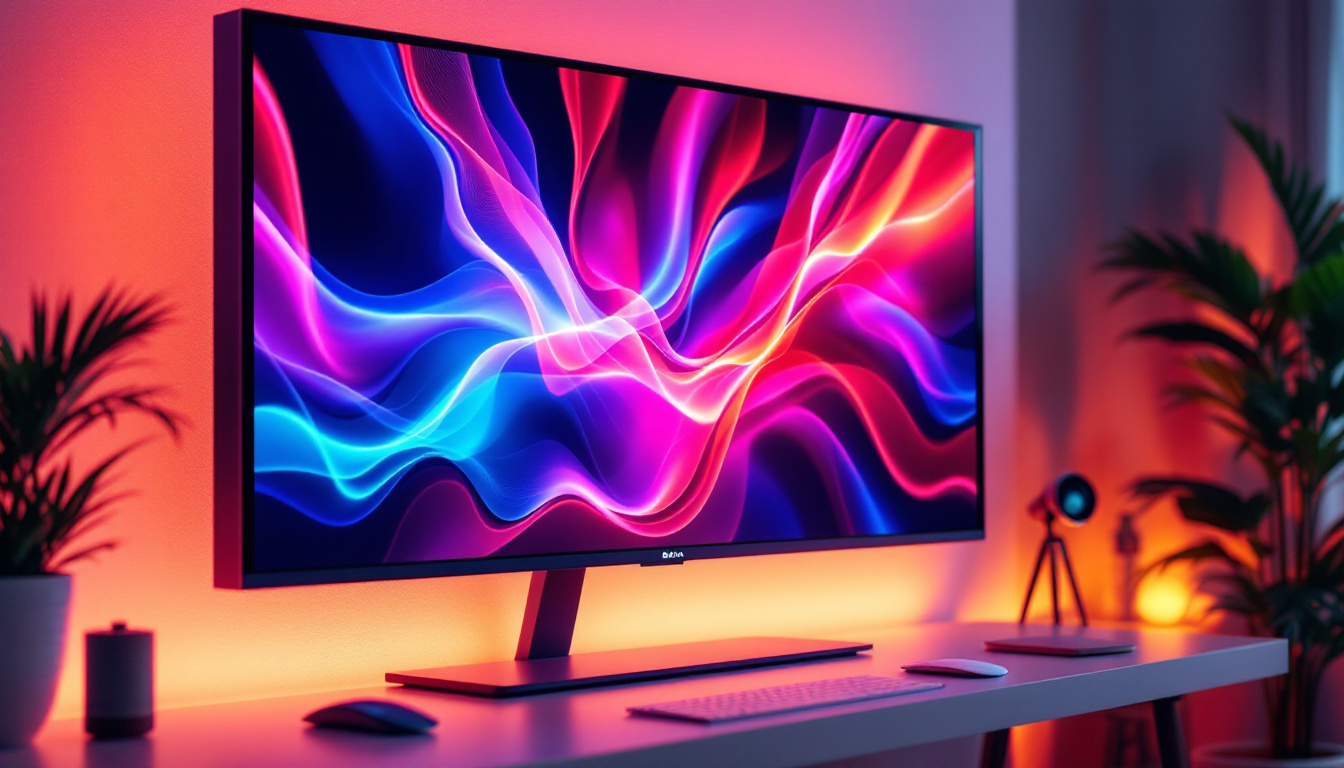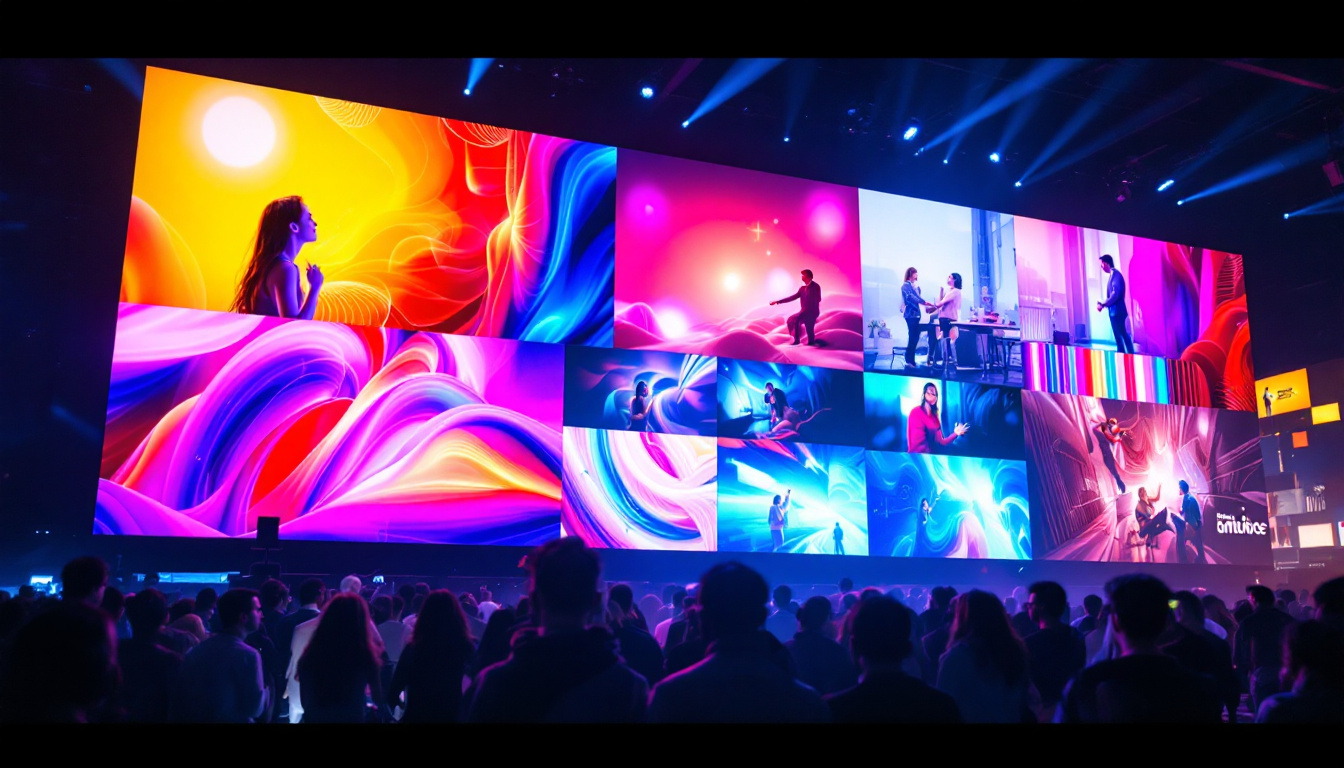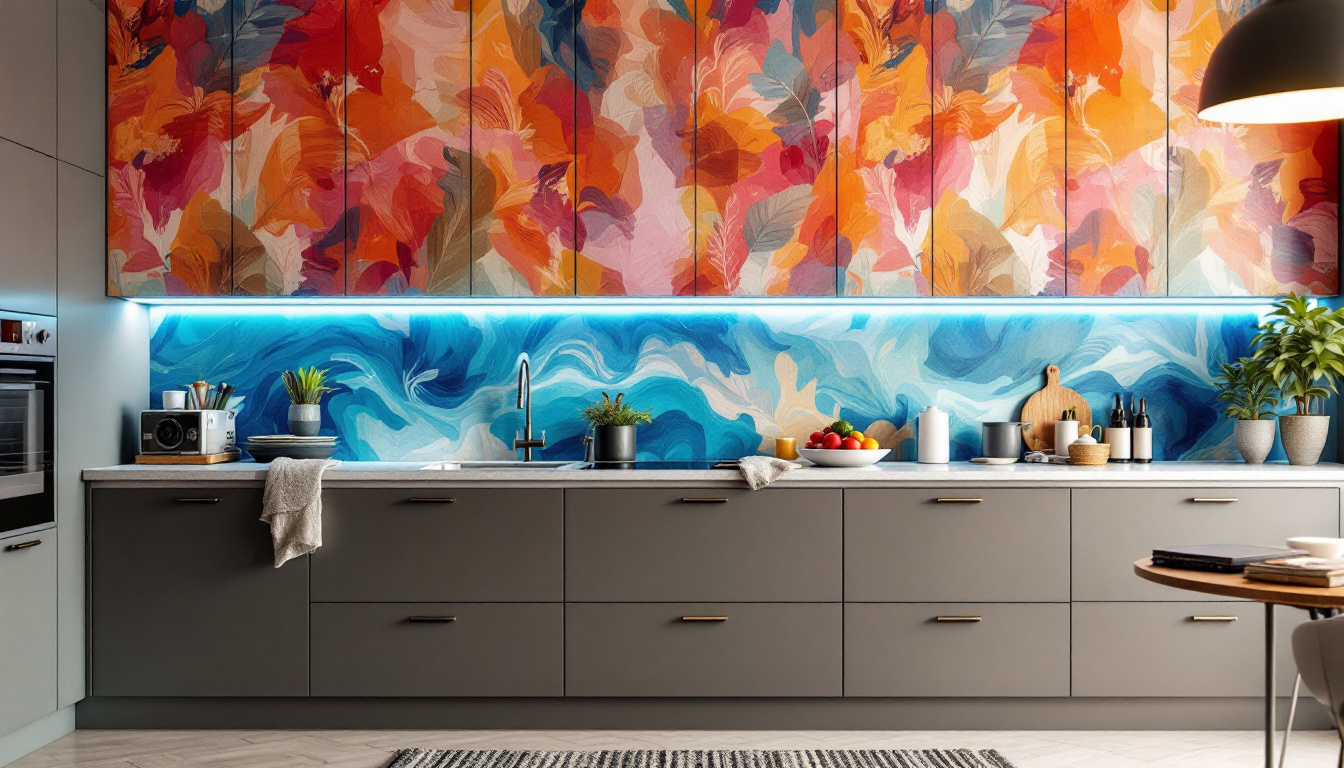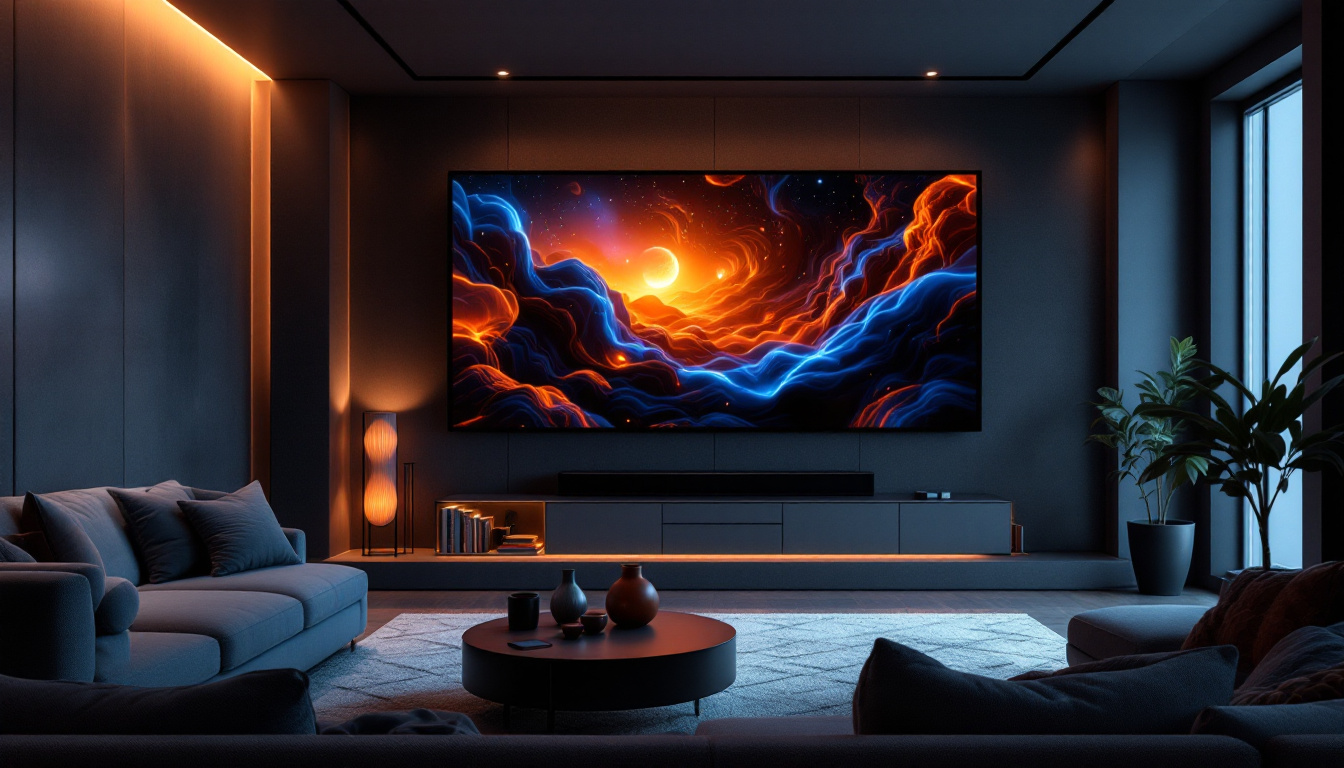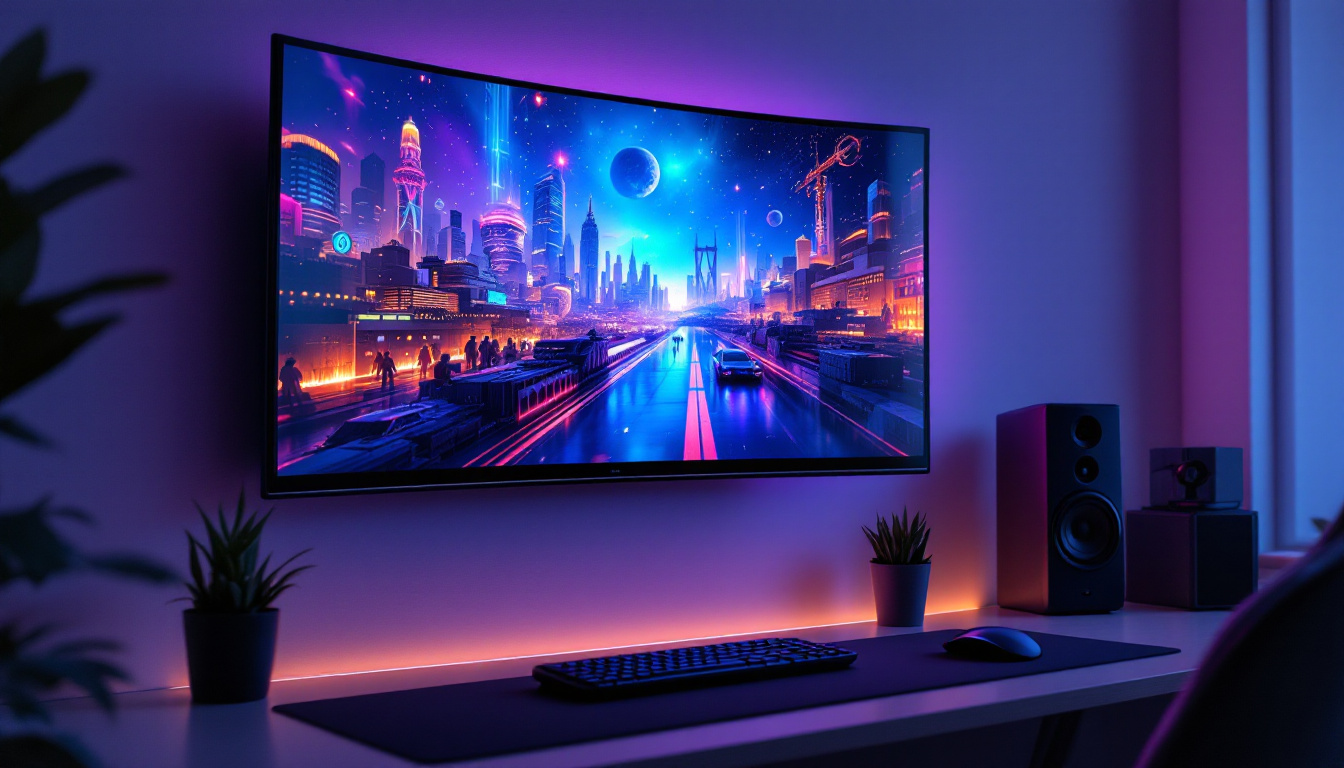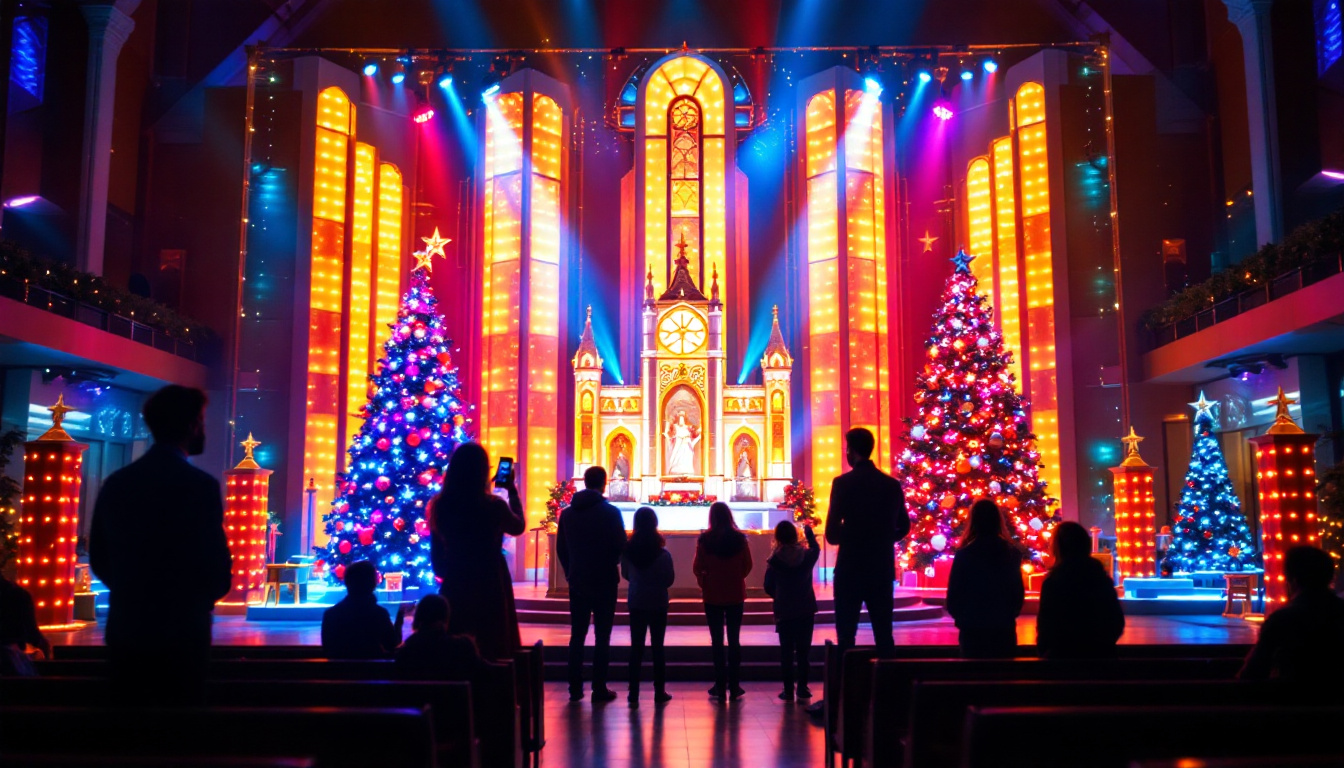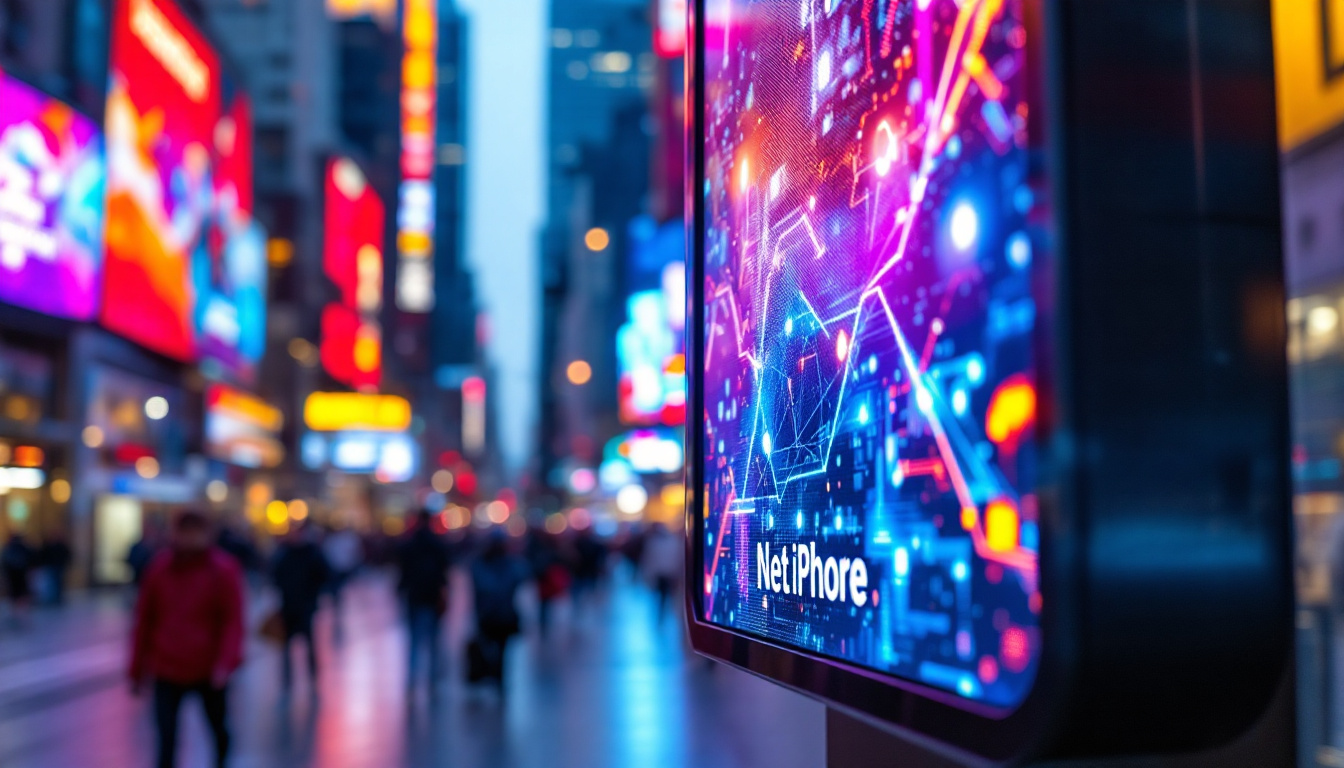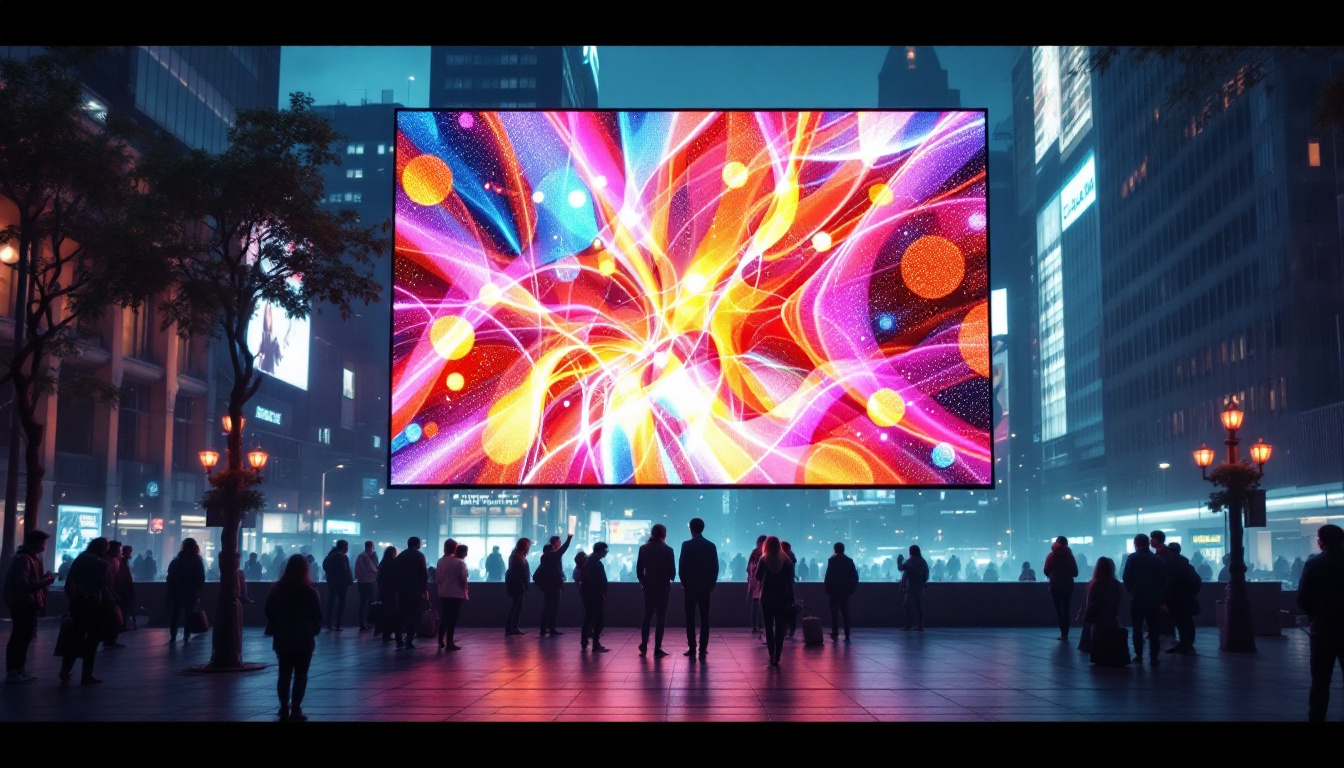In recent years, the rise of vertical video has transformed the landscape of digital content creation. With the proliferation of smartphones and social media platforms, vertical video has become a preferred format for many creators and brands. This article delves into the essentials of creating vertical videos, particularly focusing on the role of LED displays in enhancing this medium.
The Evolution of Video Formats
Video formats have evolved significantly since the inception of film. From traditional 4:3 aspect ratios to the modern 16:9 widescreen, the way we consume video content has continually adapted to technological advancements and changing viewer preferences. The emergence of vertical video as a dominant format is a testament to this evolution.
The Rise of Vertical Video
Vertical video gained traction with the advent of platforms like Snapchat and Instagram Stories, where users naturally hold their smartphones vertically. This shift in viewing habits has prompted content creators to rethink their approach to video production. Brands, influencers, and everyday users have embraced vertical video for its ability to engage audiences in a more intimate and direct manner. As a result, many video editing tools and apps have started to prioritize vertical formats, providing users with the resources they need to create high-quality content that fits this new style.
Why Vertical Video Matters
Vertical video is not just a trend; it represents a fundamental change in how audiences interact with video content. Studies have shown that vertical videos can lead to higher engagement rates, as they occupy more screen space on mobile devices. This format allows for a more immersive experience, capturing viewers’ attention more effectively than traditional horizontal videos. Furthermore, the rise of live streaming on platforms such as TikTok and Facebook Live has further solidified the importance of vertical video, as these platforms are optimized for quick, engaging content that is easily consumed on-the-go.
As the landscape of video consumption continues to evolve, the implications for marketers and content creators are profound. The ability to craft compelling narratives within a vertical frame challenges creators to innovate and experiment with storytelling techniques. For instance, the use of split screens, dynamic text overlays, and interactive elements can enhance viewer engagement, making the content not only more visually appealing but also more interactive. This shift encourages a more creative approach, pushing the boundaries of traditional video production and inviting a new generation of creators to explore the limitless possibilities of vertical storytelling.
Understanding LED Displays
LED displays have become a staple in modern video production and advertising. Their vibrant colors, high brightness, and flexibility make them ideal for various applications, from large-scale billboards to intimate event screens. Understanding how LED displays work and their advantages can significantly enhance the quality of vertical video content. As technology continues to evolve, the integration of LED displays into our daily lives becomes increasingly seamless, influencing how we consume information and entertainment.
Moreover, the versatility of LED technology extends beyond traditional advertising. In recent years, we have seen a surge in the use of LED displays in art installations, sports arenas, and even in the automotive industry for dashboard displays. This adaptability allows artists and designers to push the boundaries of creativity, using LED technology to craft immersive experiences that engage audiences in novel ways. The ability to create dynamic visuals that can change in real-time opens up a world of possibilities for storytelling and interaction.
How LED Displays Work
LED (Light Emitting Diode) technology utilizes semiconductor materials to emit light when an electric current passes through them. This technology allows for the creation of bright, energy-efficient displays that can be used in a variety of settings. LED displays are composed of numerous tiny pixels, each capable of producing different colors, which combine to create a full image. The arrangement of these pixels can vary, with some displays employing RGB (red, green, blue) configurations to produce a wide spectrum of colors, while others might use monochrome setups for specific applications.
In addition to their pixel configuration, LED displays can also be categorized based on their technology. For instance, Direct View LED displays provide a seamless image without bezels, making them ideal for large installations where continuity is key. On the other hand, LED-backlit LCD displays combine traditional LCD technology with LED lighting to enhance color accuracy and contrast. Understanding these differences is crucial for selecting the right type of display for a given project, ensuring that the visual output meets the desired standards.
Advantages of LED Displays
The advantages of LED displays are numerous. Their high brightness levels ensure visibility even in bright sunlight, making them perfect for outdoor advertising. Additionally, LED displays are energy-efficient, which translates to lower operational costs. Their modular design allows for easy scaling, enabling creators to customize the size and shape of their displays to fit specific needs. This flexibility is particularly beneficial for event organizers who may require temporary installations that can be easily assembled and disassembled.
Furthermore, LED displays offer superior durability compared to traditional display technologies. They are resistant to shock and vibration, making them suitable for high-traffic environments such as shopping malls and concert venues. The lifespan of LED displays is also impressive, often exceeding 100,000 hours of operation, which means less frequent replacements and maintenance. This longevity not only contributes to cost savings but also reduces environmental impact, aligning with the growing emphasis on sustainability in technology and design.
Creating Vertical Video Content
When it comes to creating vertical video content, several key factors must be considered. From framing and composition to lighting and sound, each element plays a crucial role in the overall quality of the video. Understanding these components is essential for producing engaging and professional-looking vertical videos.
Framing and Composition
Framing is one of the most critical aspects of vertical video production. Since the format is narrower than traditional video, careful attention must be paid to composition. Utilizing the rule of thirds can help create visually appealing shots. Placing key subjects along the intersecting lines of a grid can draw viewers’ eyes to the most important elements of the scene.
Additionally, vertical videos often benefit from close-ups and dynamic shots. These techniques can create a sense of intimacy and connection with the audience, making the content more relatable and engaging.
Lighting Techniques
Lighting is another vital component of video production. Proper lighting can enhance the mood and tone of a video, while poor lighting can detract from its quality. For vertical videos, natural light is often the best option, as it provides a soft, flattering illumination. However, when shooting indoors or in low-light conditions, using artificial lights can help achieve the desired effect.
Softbox lights and ring lights are popular choices for video creators, as they provide even lighting without harsh shadows. Experimenting with different lighting setups can help find the perfect balance for each unique scene.
Integrating LED Displays in Vertical Video
Incorporating LED displays into vertical video projects can elevate the overall production value. Whether used as a backdrop or a primary visual element, LED displays can enhance storytelling and create a more immersive experience for viewers.
Using LED Displays as Backdrops
LED displays can serve as stunning backdrops for vertical video shoots. By displaying dynamic visuals or relevant graphics, they can add depth and context to the content. This technique is particularly effective for music videos, promotional content, and live events, where the backdrop can enhance the overall atmosphere.
When utilizing LED displays, it is essential to ensure that the content displayed complements the video being shot. Mismatched visuals can create confusion and detract from the intended message.
Dynamic Visuals and Graphics
Incorporating dynamic visuals and graphics on LED displays can significantly enhance the storytelling aspect of vertical videos. Animated graphics, text overlays, and real-time data can engage viewers and provide additional context to the content. This approach is particularly effective in marketing and promotional videos, where capturing attention quickly is crucial.
Best Practices for Vertical Video Production
To maximize the impact of vertical videos, adhering to best practices is essential. These guidelines can help ensure that the final product resonates with audiences and achieves its intended goals.
Optimize for Mobile Viewing
Since vertical videos are primarily consumed on mobile devices, optimizing content for mobile viewing is crucial. This includes ensuring that text is legible, visuals are clear, and the overall composition is engaging on smaller screens. Testing the video on various devices can help identify any potential issues before publication.
Keep Content Concise
In the fast-paced world of social media, attention spans are short. Keeping vertical videos concise and to the point is essential for retaining viewer interest. Aim for a clear message that can be conveyed within the first few seconds. Utilizing hooks at the beginning of the video can help capture attention and encourage viewers to continue watching.
The Future of Vertical Video and LED Displays
The future of vertical video and LED displays looks promising, with continued advancements in technology and changing viewer preferences. As more platforms embrace vertical formats, content creators will need to adapt and innovate to stay relevant.
Emerging Technologies
Emerging technologies, such as augmented reality (AR) and virtual reality (VR), are set to redefine the landscape of video production. These technologies can be integrated with vertical video to create immersive experiences that engage audiences on a deeper level. As AR and VR become more accessible, the potential for creative storytelling will expand significantly.
Adapting to Changing Trends
As trends in video consumption evolve, staying informed about audience preferences will be crucial for content creators. Engaging with viewers through interactive content and leveraging data analytics can help tailor videos to meet audience expectations. This adaptability will be key to thriving in an ever-changing digital landscape.
Conclusion
Vertical video has emerged as a powerful format in the realm of digital content creation, driven by the rise of mobile viewing and social media platforms. Understanding the role of LED displays in enhancing vertical video can significantly elevate the production quality and viewer engagement. By adhering to best practices and staying informed about emerging technologies, content creators can harness the full potential of vertical video to captivate audiences and convey their messages effectively.
As the digital landscape continues to evolve, embracing vertical video and the innovations surrounding it will be essential for brands and creators looking to make a lasting impact. The future is bright for vertical video, and with the right tools and strategies, the possibilities are endless.
Discover LumenMatrix LED Display Solutions
Ready to take your vertical video content to the next level? Explore LumenMatrix’s innovative LED display technology and find the perfect solution to elevate your brand’s visual storytelling. From Indoor and Outdoor LED Wall Displays to specialized options like Vehicle and Sports Displays, LumenMatrix offers a wide range of modules designed to create immersive experiences that captivate your audience. Embrace the future of digital signage with our All-in-One and Custom LED Displays, and see the difference that clarity and engagement can make. Check out LumenMatrix LED Display Solutions today and transform the way you communicate visually.

